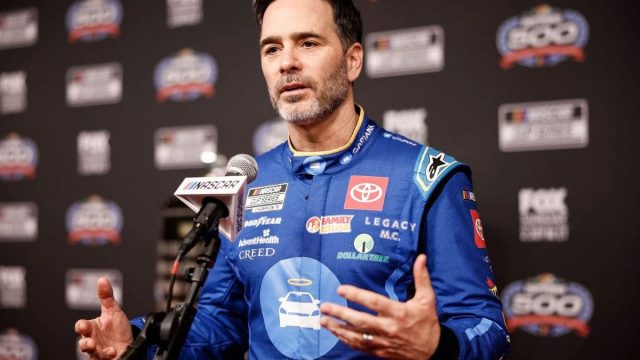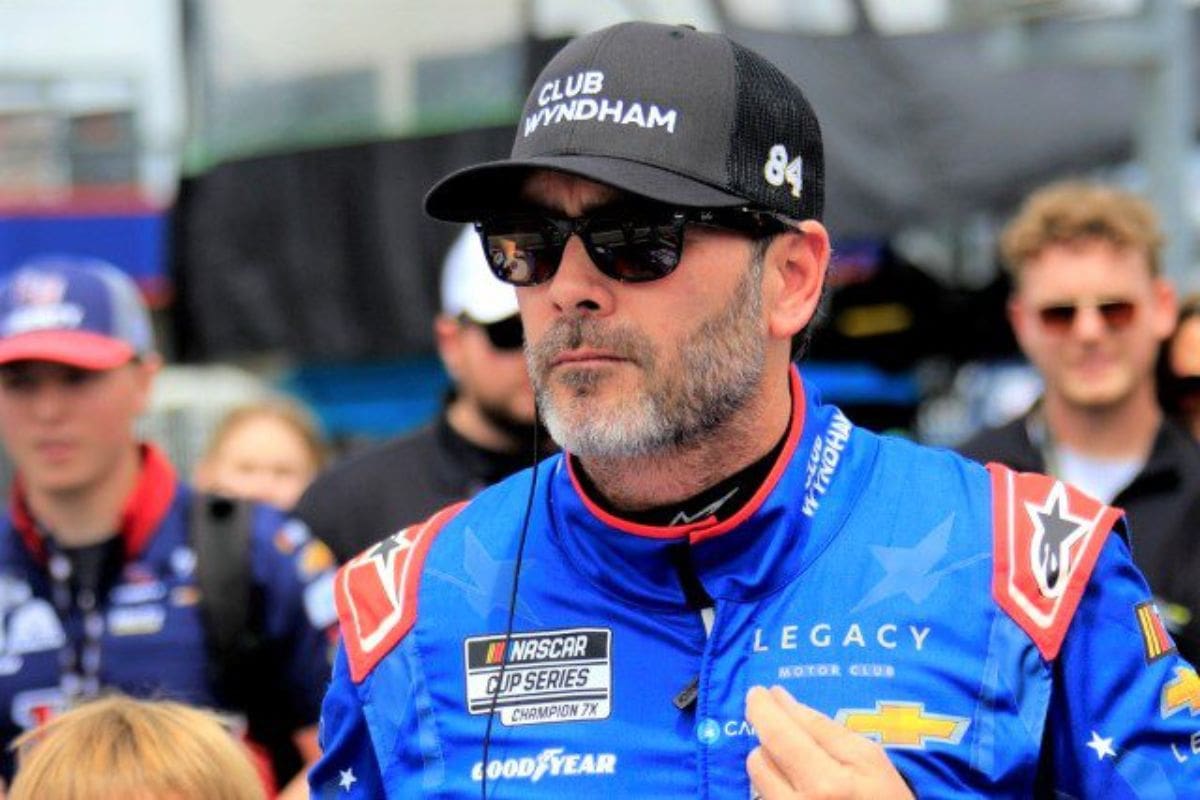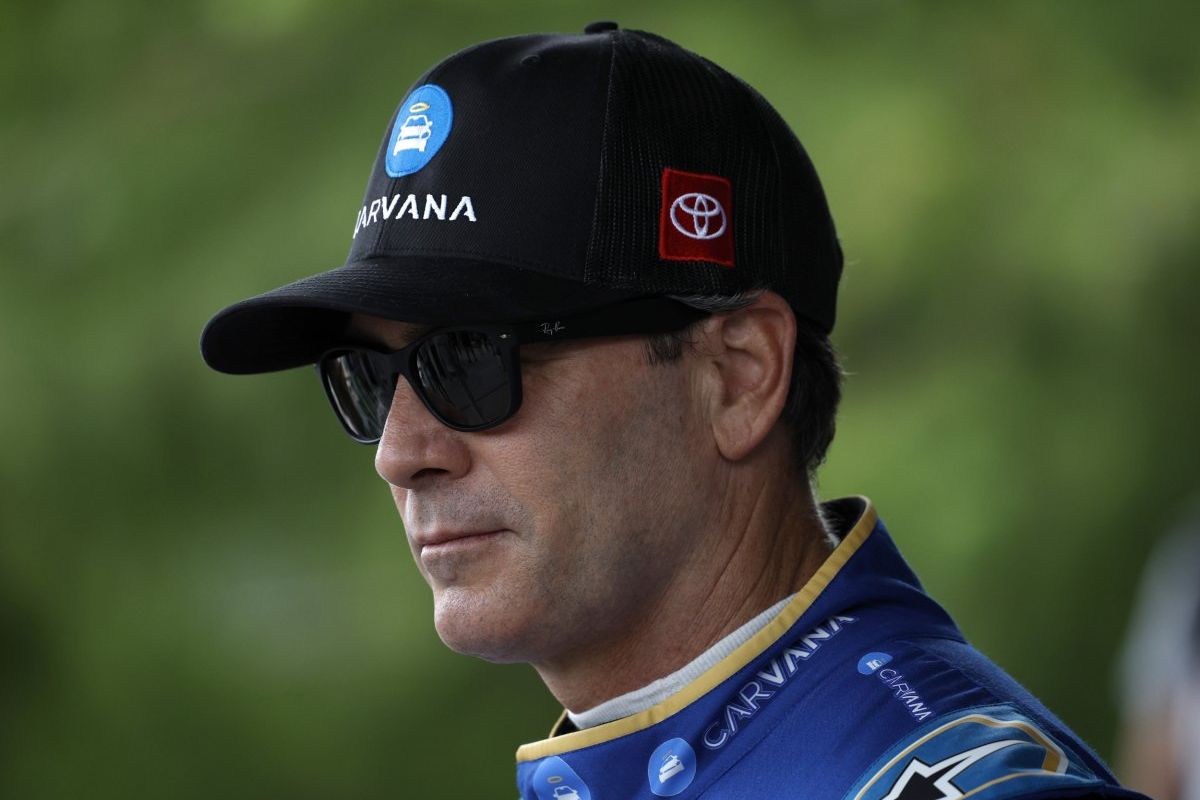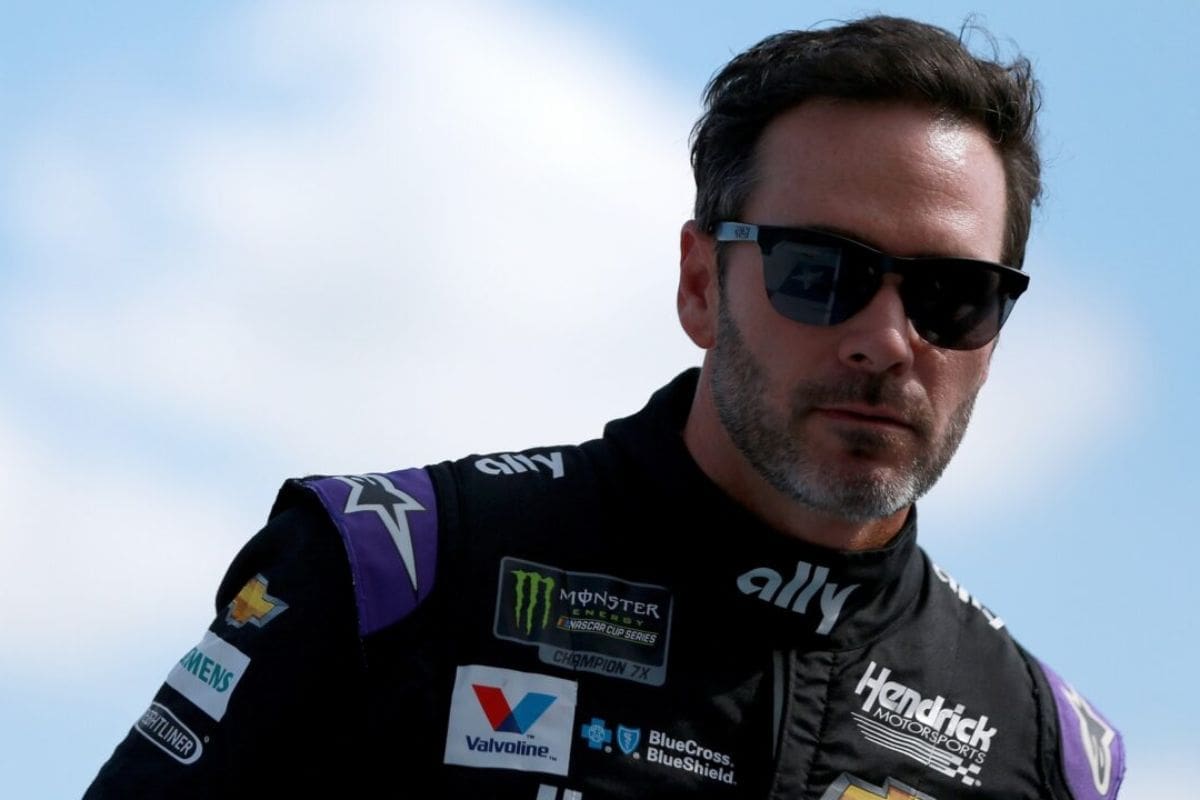Jimmie Johnson Struggles After Owning a NASCAR Team: Jimmie Johnson‘s shift to co-owner of Legacy Motor Club has not unfolded as anticipated, with the team grappling with alarming performance issues that result in a best finish of merely 28th this season. The decision to move from chevrolet/”>Chevrolet to Toyota raises questions about the tactical direction of the team and its ability to harness new opportunities. As Johnson confronts the strain of operational changes and talent development, one must consider whether his long-term vision can withstand the weight of current setbacks and what implications this holds for the future of the franchise.
Key Highlights
- Jimmie Johnson’s transition to co-owner of Legacy Motor Club has faced significant performance challenges, including a best finish of only 28th this season.
- The team’s recent race results at Indianapolis included finishes of 28th, 29th, and 33rd, raising concerns about playoff aspirations.
- The release of crew chief Jason Burdett indicates urgent needs for operational changes amidst ongoing struggles for top-ten finishes.
- Legacy Motor Club’s shift from Chevrolet to Toyota aims for long-term growth, but immediate results have been disappointing, reflecting a lack of competitive edge.
Ownership and Team Changes
Jimmie Johnson’s shift to co-owner of Legacy Motor Club marks a significant change in his career, highlighting the complexities and challenges inherent in team ownership within NASCAR. Moving from a celebrated driver to a team principal requires not only a profound understanding of racing dynamics but also adept managerial skills that extend beyond the racetrack.
Johnson’s initial move to rebrand Petty GMS as Legacy Motor Club signifies an ambitious vision, yet it also emphasizes the weight of legacy he carries, particularly in relation to the iconic Richard Petty.
The decision to switch from Chevrolet to Toyota reflects a tactical pivot aimed at reviving the team’s performance. This bold choice, however, entails going through the intricacies of new manufacturer relationships and adapting to different engineering philosophies. Unlike 23XI Racing, which utilized Technical Alliances, Johnson’s strategy prioritizes long-term growth over short-term gains, asserting a commitment to building a sustainable and competitive program.
As Johnson sets out on this journey, he faces the dual challenge of managing expectations while fostering team cohesion. In NASCAR, the change from driver to owner often reveals a steep learning curve. Johnson must now balance the immediate demands of performance with the overarching goal of establishing a lasting legacy.
Recent Struggles and Performance Issues
The recent performance issues at Legacy Motor Club highlight the notable challenges faced by the team as it seeks to establish itself in NASCAR. This season has been particularly disappointing for Jimmie Johnson and his squad, marked by a series of lackluster results that have raised questions about the team’s direction and strategy.
The decision to release crew chief Jason Burdett and a substantial portion of the No. 84 Toyota Camry crew indicates a desperate attempt to rectify ongoing struggles. Johnson’s tenure as a driver and team owner has so far produced no victories, a clear contrast to his storied career. His best finish this season has been a mere 28th place, showing a lack of competitive edge that is alarming for a team of this caliber.
The recent race at Indianapolis Motor Speedway symbolized the team’s plight, with two cars crashing and finishes of 28th, 29th, and 33rd. These results are representative of a broader issue, as both Erik Jones and John Hunter Nemechek languish in the lower tiers of the driver standings, effectively extinguishing playoff aspirations.
As Legacy Motor Club grapples with these performance issues, the path ahead appears filled with uncertainty. The team’s ability to adapt and innovate will be vital in determining whether it can reverse its fortunes in an unforgiving NASCAR environment. The urgency for change is noticeable, yet the effectiveness of these adjustments remains to be seen.
Jimmie Johnson’s Reflections and Long-Term Vision
Steering through the complexities of NASCAR, Jimmie Johnson reflects on the unexpected challenges faced by Legacy Motor Club, emphasizing a steadfast commitment to a long-term vision despite recent setbacks. As a co-owner and part-time racer, Johnson articulates the arduous nature of the sport, admitting that the difficulties have exceeded his initial expectations. He notes, “I thought that last year we were kind of at the bottom and then we went down a little lower,” showing the relentless pursuit of improvement amidst adversity.
Legacy Motor Club’s approach, distinct from competitors like 23XI Racing, highlights a tactical decision to build organically rather than rely on external alliances for immediate gains. Johnson’s philosophy is rooted in a thorough vision for the team that prioritizes foundational strength over fleeting success. While the expedition has been filled with challenges, he remains optimistic about the potential for growth, asserting, “I do think we’re climbing our way out now.”
“I didn’t think it would this tough. it’s a tough sport and we have a great vision and have made a massive commitment to that long-term vision, so we’re on the journey, but I thought that last year we were kind of at the bottom and then we went down a little lower and found a lower bottom. I do think we’re climbing our way out now but there’s just so much that goes into it and getting the pieces in place and moving it along, there’s a lot there.” – (Johnson)
The resilience shown by Johnson and his team reflects a broader understanding of NASCAR’s intricacies, where quick fixes can often yield superficial results. Instead, Legacy Motor Club is focused on cultivating a sustainable framework that will position them for future competitiveness. This long-term vision, while demanding patience, is vital for establishing a formidable presence in the sport.
Legacy Motor Club Tactical Adjustments
Amidst ongoing challenges, Legacy Motor Club is implementing tactical adjustments, including a vital switch from Chevrolet to Toyota, aimed at fostering a more sustainable long-term competitive advantage. This tactical change not only aligns the team with a less congested roster but also improves their potential to cultivate a robust developmental program.
As the current season reveals, the change has yet to yield immediate results, with John Hunter Nemechek and Erik Jones struggling to secure top-ten finishes consistently, and Jimmie Johnson facing difficulties in his new role. Despite the disheartening statistics—three top-ten finishes combined and a notable number of DNFs—the leadership at Legacy Motor Club remains optimistic.
The decision to align with Toyota reflects a broader plan to compete against many well-supported Chevrolet teams. By using the unique resources and engineering capabilities of Toyota, the team aims to improve its competitiveness and, ultimately, its performance on the track.
Looking ahead, Johnson is focusing on optimizing resource allocation within the organization, particularly for their additional team. This involves refining operational strategies, improving team synergy, and prioritizing targeted development initiatives that promise to yield better results over time.
The commitment to a long-term vision, despite current setbacks, highlights the resilience of Legacy Motor Club. By embracing these adjustments, the team is positioning itself for a more promising future in NASCAR, with an eye toward reestablishing its competitive edge in the coming seasons.
Development of New Talent and Team Transition
Steering through a notable shift, Legacy Motor Club is prioritizing the development of new talent while simultaneously addressing internal restructuring challenges. As Jimmie Johnson shifts from a part-time driver to a mentor, the team is at a crossroads, needing to strike a balance between operational efficiency and talent cultivation. This dual focus is crucial for the organization’s long-term sustainability in NASCAR.
The recent release of crew chief Jason Burdett and a substantial portion of the No. 84 Toyota Camry crew highlights the urgency for change. Johnson’s groundbreaking approach aims to repurpose the tertiary car not merely as a racing entity but as a developmental platform.
“I want to race but I don’t want the third car to be a detriment to the other two. The revenue we generate can help us use the third car to develop new talent and can help us develop new setup ideas. But when you run nine races, you need a pretty robust crew to run that car and that’s inefficient for only nine races. If you take it down to three to five races, you don’t need that crew but then you’re pulling against the number 42 and 43 cars, so we’re trying to find that balance.” – (Johnson)
| Aspect | Current Status | Future Direction |
|---|---|---|
| Talent Development | Limited by crew changes | Focus on nurturing emerging drivers |
| Crew Efficiency | Oversized crew for fewer races | Streamlining operations for cost-effectiveness |
| Leadership Structure | Change in key personnel | New General Manager to guide tactical vision |
The implications of these adjustments are profound; they represent an opportunity and a risk. While Jimmie Johnson’s tactical vision aims to enhance talent and improve setups, the immediate challenge remains: ensuring reliability to foster development. Legacy Motor Club’s success depends on their ability to handle these changes effectively while avoiding early retirements and continued disappointing performances. The path forward is filled with uncertainty, yet the potential rewards are considerable.
News in Brief: Jimmie Johnson Struggles After Owning a NASCAR Team
The challenges faced by Legacy Motor Club under Jimmie Johnson’s ownership show the complexities of moving from a successful driver to a team leader. Ongoing performance issues and tactical shifts have hindered progress, raising concerns about the effectiveness of recent changes.
Despite these obstacles, the commitment to talent development and a long-term vision remains crucial for future success. Addressing operational shortcomings will be critical in reversing the current path and establishing the team as a competitive force in the industry.
ALSO READ: Jimmie Johnson Faces Ownership Challenges During Crew Chief Changes



